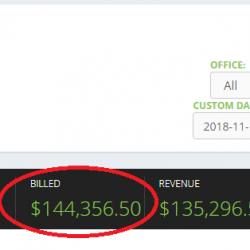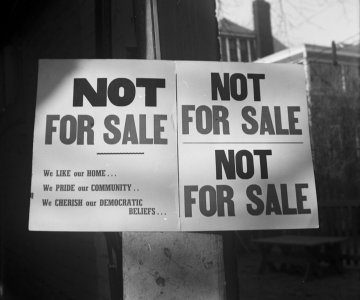about what does reo stand for in real estate

Let's get going. Since various residential or commercial properties serve different business functions, they are separated into 4 significant classifications: Multi-family refers to residential or commercial properties with multiple systems, frequently described as dwellings, all within one structure. A great example of a multi-family home is an apartment. You may be thinking, "But aren't home buildings residential?" The answer is yes, but only if they have less than 5 units. Any buildings with 5 or more systems are thought about industrial home. This is because, in many cases, the owner of the building acquired it mainly to create income from the rental systems, not to live in it.
Despite the shuffling of tenants, the profitability of a big apartment is rarely ever affected by having a couple of vacant systems. For this factor, this type of home is considered one of the more secure options for financiers. Office structures are equipped to provide tenants with space for cubicles, meeting room, a reception location, etc. A lot of companies do not want to move their entire labor force around best way to sell timeshare regularly, which is why it prevails for office leases to be long-lasting. In basic, workplace structures are classified into three different groups:: These buildings are the greatest quality office around. They frequently have high ceilings, glamorous lobbies, quality management and extensive facilities such as an in-office fitness center or rooftop.
These residential or commercial properties will have the most expensive rental fees.: Structures that remain in this class are your average office complex. While they might not have sophisticated features, they're still functional facilities with professional management. These kinds of buildings are normally found in the suburbs and are older than the Class A buildings.: This is the least expensive tier of workplace. These buildings are normally 20+ years and of the most affordable quality in terms of infrastructure. Many Class C structures are situated in unwanted areas and likely need some degree of repair or renovation. The classification tiers were made basic by the Structure Owners and Supervisors Association (BOMA) to encourage reporting of office conditions and contrast between structures.
These standards are subjective and mostly reliant on the regional market. A Class B structure could be considered a Class A structure in a various neighborhood. The retail classification includes anything varying from a community strip shopping center to large shopping and entertainment centers. Typically, retail space is more costly per square foot than office is. That's because organizations wanting to purchase or lease this kind of home are mostly concentrated on foot traffic. Similar to office complex, many business retail leases are long-term and could vary anywhere from 5 to ten years. The majority of retail residential or commercial properties will have one or several "anchor tenants" which are big name brands that have the biggest area on the lot.

The commercial sector of business realty consists of structures such as storage facilities and other kinds of manufacturing or distribution facilities. They are typically located beyond property or metropolitan locations, and occupied by a single tenant. Because the main function of these buildings is industrial, there are normally zoning guidelines that need to be followed. While there isn't technically a fifth category, there are other properties that fall under the industrial umbrella that don't suit any of the sectors we have actually currently covered. This consists of homes like hotels, health centers, nursing houses and self-storage buildings which are all for-profit facilities and therefore, business.
domestic property. Representatives are still needed to take classes and pass a licensing examination in the state they live and operate in. After making their license, many agents will begin their careers in property before proceeding to the business sector. Comparable to residential representatives, experts operating in business property invest most of their time working with their customers. The big distinction is that the customers are going to be investors or organizations, rather of individuals or families. There will be representatives who work solely for services to assist them find a space to rent, and there will be representatives that work exclusively with investors who are wanting to buy.
Unknown Facts About What Is Wholesale Real Estate
If you're looking more insight into the working lives of representatives and the genuine estate industry as an entire, check out this list of 60 appropriate market statistics to know in 2019. The business sector isn't precisely what enters your mind when many people consider realty. That being said, the commercial market is continuously altering and has potential to be extremely rewarding for representatives who pick to go this path.

While it is certainly a broad term, to put it merely, industrial realty is each and every single residential or commercial property except a single-family residential house. If it's not a single-family removed out of timeshare domestic house, condominium, or town-home you can place a sure thing on the truth that it's business. In contrast to property, business real-estate is likewise often significantly larger areas than domestic, as well as a broader variety of residential or commercial properties that fall under the commercial umbrella. Numerous that reside in a home complex error their Click here to find out more address for one that's domestic, which could not be further from the truth. The overall commercial property umbrella consists of however is not limited to apartments, land, retail residential or commercial properties, churches, amusement park, schools, marinas, self-storage facilities, federal government real-estate, commercial homes, and workplace areas.
Commercial property is any home owned to produce earnings, including office, industrial, retail, mixed-use, medical workplace, home entertainment and educational facilities, but not property housing. It likewise includes uninhabited land that will become rented or established. Visit the NAIOP Terms and Definitions Glossary for comprehensive descriptions of residential or commercial property types, advancement terms, building material meanings, lease and transaction terms and more.
Industrial realty is a primary type of realty that involves residential or commercial properties utilized for commerce functions. What does contingent in real estate mean. An industrial property is any building or land that you utilize with the intent of earning a profit, either through rental income or through capital gained from a business that makes use of said residential or commercial property. The 6 most typical categories of commercial property are: Workplace structures, consisting of single-occupancy buildings and professional workplace buildings Industrial property, including light storage, warehousing, research study, production, assembly, production, and circulation (* Buildings that satisfy office requirements of tangible items production might likewise be considered commercial realty.) Retail/ dining establishment Multifamily, an apartment building or hi-rise that generates rental income Land, including undeveloped financial investment residential or commercial properties Miscellaneous, consisting of products not covered by the classifications above, i.






Ingen kommentarer endnu